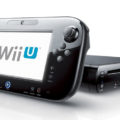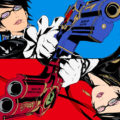Special Feature: Watching Wii U and Its Software from Afar

Nintendo’s Wii was a success thanks to the company’s ability to bring in an audience that didn’t typically play video games through its software and unique motion controls. Sure, the excitement around it fizzled after that audience shifted to phones and tablets to play games instead, and the software lineup wasn’t as appealing as it could have been for the core audience. But its success was so overwhelming during its best years that it made up for the burdensome ones.
It’s a pity the same couldn’t be said about Wii U.
With Wii U, Nintendo wanted to appeal to the reliable core gaming audience again, while still throwing the casual one some bones. But it was doomed form the start. The system’s power was on par with the PlayStation 3 and Xbox 360, but it released just as those systems were on their way out.
Nintendo provided plenty of good software, but third-party publishers devoted most of their resources to either PlayStation 4 or Xbox One and handheld development at the time. This left the Wii U with mostly ports, but those stopped after their sales were below those on PS3 and 360, and became difficult to convert with the shift to more powerful consoles. This, combined with a marketing campaign that led to several observers thinking it was simply a tablet controller for Wii, doomed it from the start. Despite that, it still received some good software.
Like the Wii retrospective I wrote in January, I’m taking a different approach with this one compared my cohorts on this blog. I never owned a Wii or a Wii U; so, instead of listing my favorite games on the system, I’m featuring four titles that had interesting development stories.

Bayonetta 2: The second Bayonetta game didn’t just have a dramatic development story by Wii U software standards; it had one of the biggest in gaming history. The PlatinumGames-developed title was originally in development for PS3 and 360, and due to be published by IP holder Sega. But it was cancelled after Sega cut costs all around. A Nintendo that needed more games for Wii U picked it up, funded its remaining development, and published it. It was clear why it was only coming exclusively to the system when it was announced in September 2012, but that didn’t stop several people from being extremely angry about this. Thankfully, most of those tensions simmered by the time it released in fall of 2014, and the game was received well.
The first and second games received another chance to sell with ports to Switch. Even better: Nintendo was impressed enough with its sales that they green lit Bayonetta 3. It’s good that this issue ended happily.

Devil’s Third: This was another game originally intended for PS3 and 360, though was sadly cancelled by a THQ that was on its last legs. It was developed by Valhalla Studios, a team mostly comprised of former new-age Ninja Gaiden staffers from Team Ninja, and featured Tomonobu Itagaki in his final job as director. Nintendo also revived this title for a late release on the system. But unlike Bayonetta 2, the results weren’t entirely pretty. The single-player campaign was a sloppy and mediocre mess, and while the multiplayer portion turned out well, it didn’t receive enough support or promotion to stay active for long. The multiplayer component received a free-to-play PC release, but only in Japan.

Kirby and the Rainbow Curse: I counted Kirby’s Canvas Curse among my favorite DS games, so I was happy that Nintendo revisited its gameplay concept with this title on Wii U. Like its predecessor, Rainbow Curse was almost entirely dependent on the stylus for Kirby’s movement, as he spun and jumped to different locations and tackled enemies along the way. It didn’t receive quite as much praise as the previous game thanks to its concept being a continuation of its predecessors, and the Wii U being considerably less popular than DS. But those who played it enjoyed it, and it’s a highlight of the Wii U lineup thanks to how its dependence on the stylus means it’s unlikely to be ported.

The Wonderful 101: Before Bayonetta 2, PlatinumGames developed this team superhero action game, directed by Bayonetta 1 director Hideki Kamiya. It was a fun isometric action game where the heroes defeated enemies that terrorized the public, and asked some they saved to join the team. The larger the group of heroes assembled, the larger and more powerful team attacks were. Those who played the game enjoyed it, but those numbers sadly weren’t high. It would be nice if Nintendo gave it another shot on Switch, and PlatinumGames has all but publicly asked Nintendo for the opportunity to handle this, but there’s no indication that it will happen. Fortunately, the relationship between both companies is good, with the aforementioned Bayonetta 3 coming along with the recently-announced Astral Chain.
Not every Wii U game with a good development story surrounding it is coming to Switch, a platform celebrating its second birthday today. But many games are receiving another chance at life. The Wii U utilized the concept of a tablet console too early, catering to the desire of an audience that wanted to play console-like games anywhere. The technology wasn’t ready for Nintendo to take it all the way at the time, but they were able to do this with Switch. For as popular as Nintendo’s current system is, though, we should appreciate how its core concept as a hybrid was first experimented with despite its failures. So, here’s to U.





